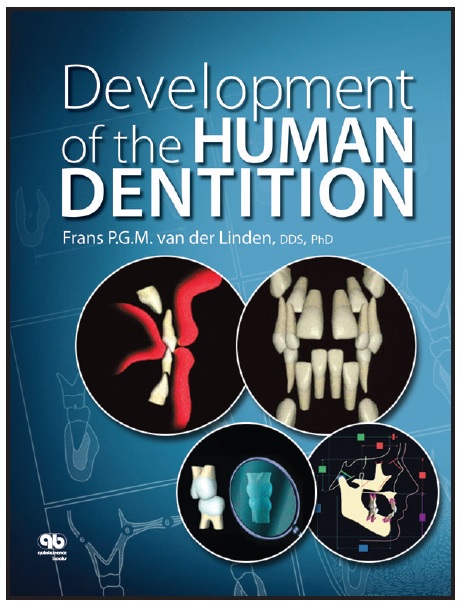BOOK REVIEW
Development of the Human Dentition
FRANS P.G.M. VAN DER LINDEN, DDS, PhD
Available as iBook only. 357 pages, 1,224 illustrations, 50 video clips. $74.99. 2016.
Quintessence Publishing Co., Inc., 4350 Chandler Drive, Hanover Park, IL 60133.
(800) 621-0387; www.quintpub.com.
Order exclusively through Apple iBooks.
As an orthodontist, I am confronted each day with complex aspects of the developing dentition. A firm understanding of normal dental development helps me diagnose any deviations in my patients. As the saying goes, "To know where you are going, you must first know where you came from." That philosophy is the basis for Dr. Frans P.G.M. van der Linden's iBook.
For almost 30 years, Dr. van der Linden's classic text, also called Development of the Human Dentition, has been the international standard reference. Like its predecessor, this electronic edition reviews tooth formation, development of the deciduous dentition, the transitional phase, the permanent dentition, and the aging process. Its 17 chapters contain ample illustrations, accompanied by 50 short video clips to facilitate three-dimensional understanding. Rather than attempting to provide an all-inclusive text, the author offers more of a visual refresher course on material previously learned in dental school and orthodontic residency.
I found the most fascinating section to be Chapters 2-8, with photographs of 100 skulls providing an anthropological tour of the dentition through life. A number of chapters are of particular interest to orthodontists, including Chapter 4, which reviews the intertransitional period (when Phase I treatment is typically provided), and Chapter 5, on the second transitional period (Phase I retention). Chapters 11-14 cover the development of various malocclusions - including Class II, division 1 and 2, and Class III - as well as open bites and asymmetries.
This book is about more than just leeway space or Moorrees charts; during my reading, I found myself referencing my own case experience. It was fascinating to learn that upper second-molar impaction is primarily due to a lack of tuberosity growth, or that the lower lip is a major culprit in the development of a Class II, division 2 malocclusion instead of a Class II, division 1.
Lifelong education sometimes means relearning previously studied information. Download this iBook and familiarize yourself with the development of the dentition with Dr. van der Linden by your side. I promise it will make you not only a better academic, but a better clinician.
Similar articles from the archive:

NEAL D. KRAVITZ, DMD, MS

